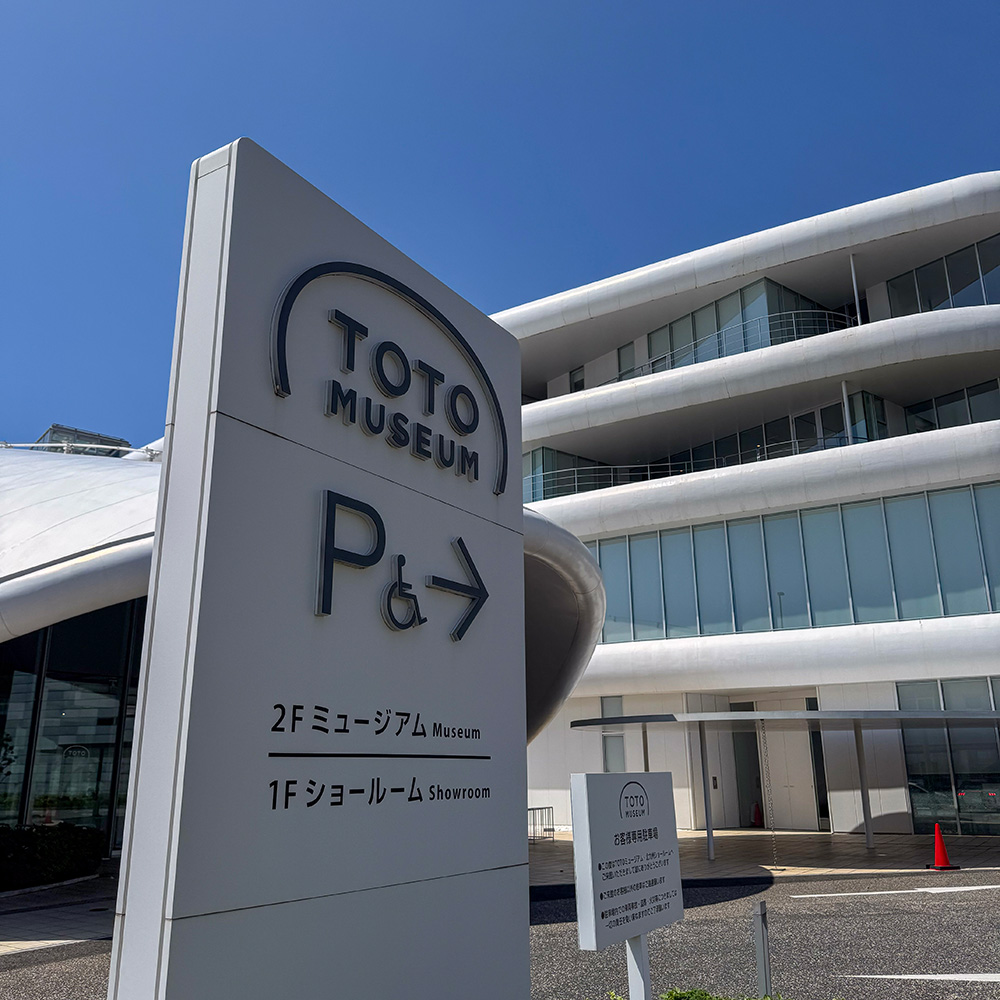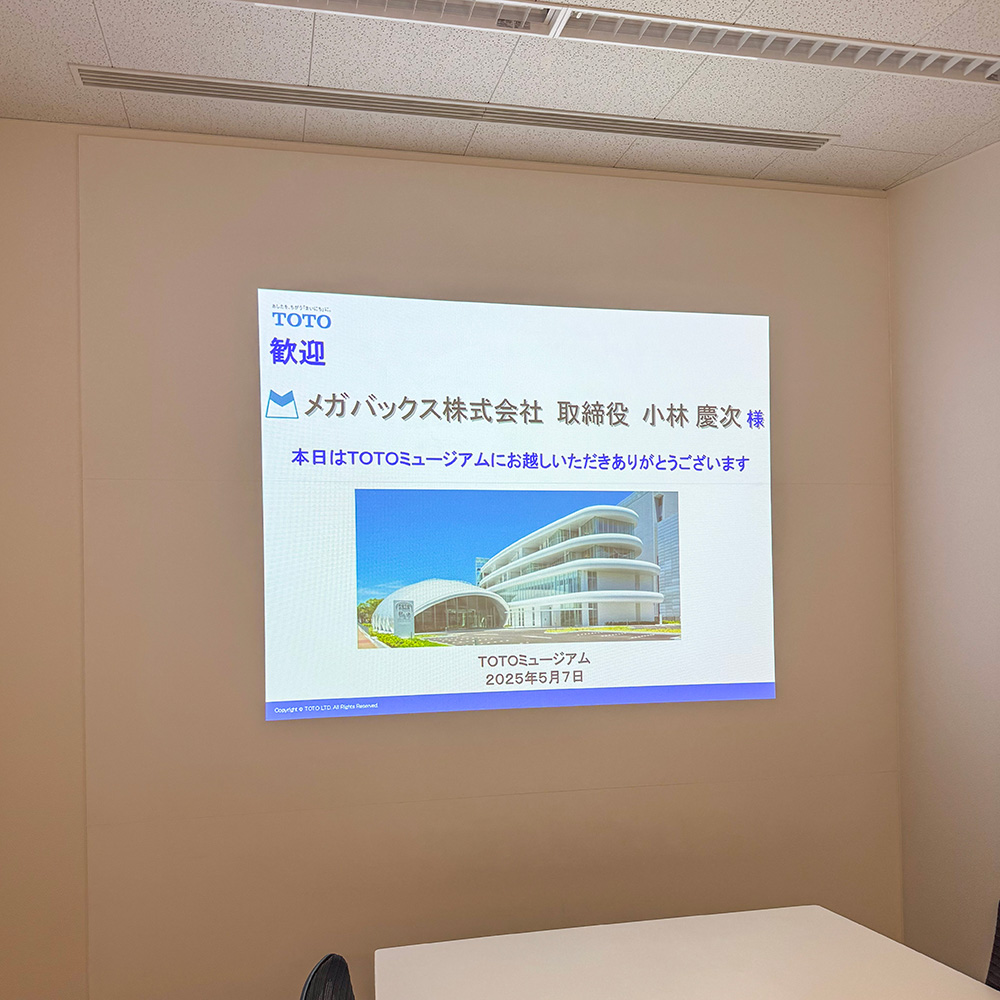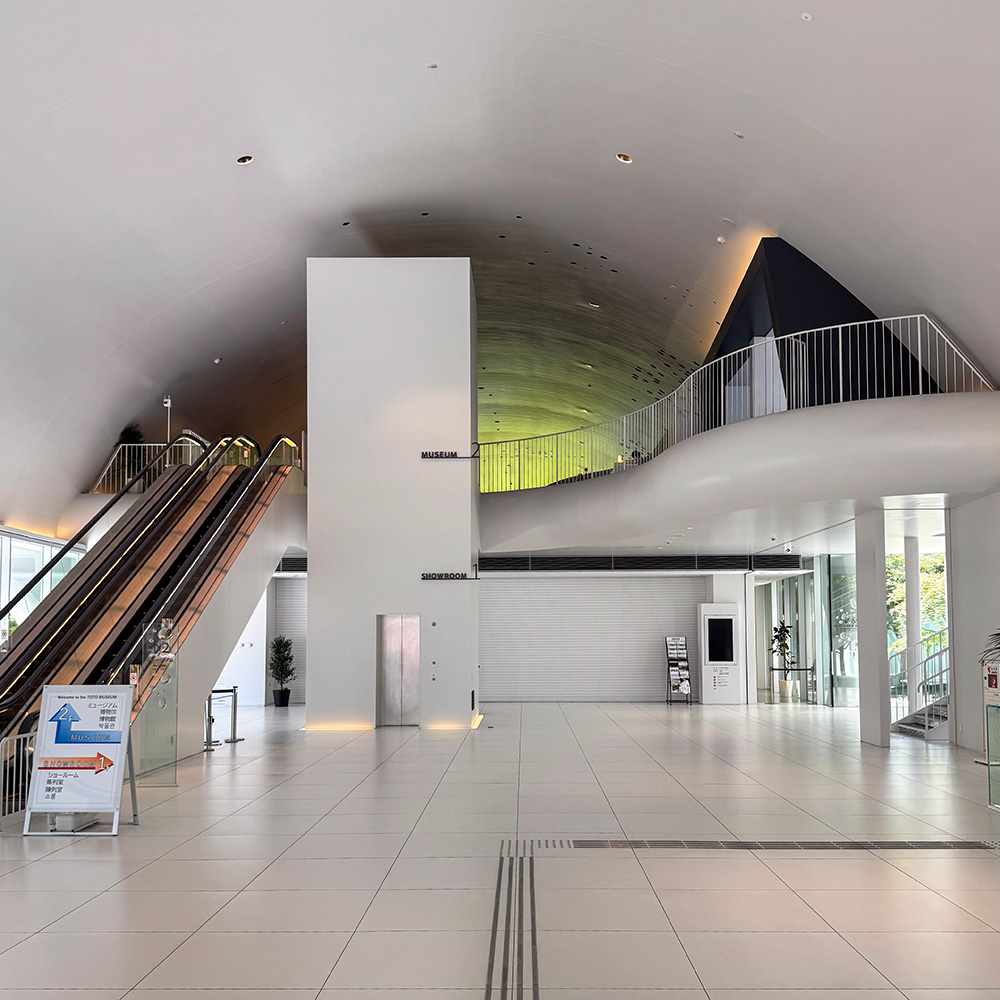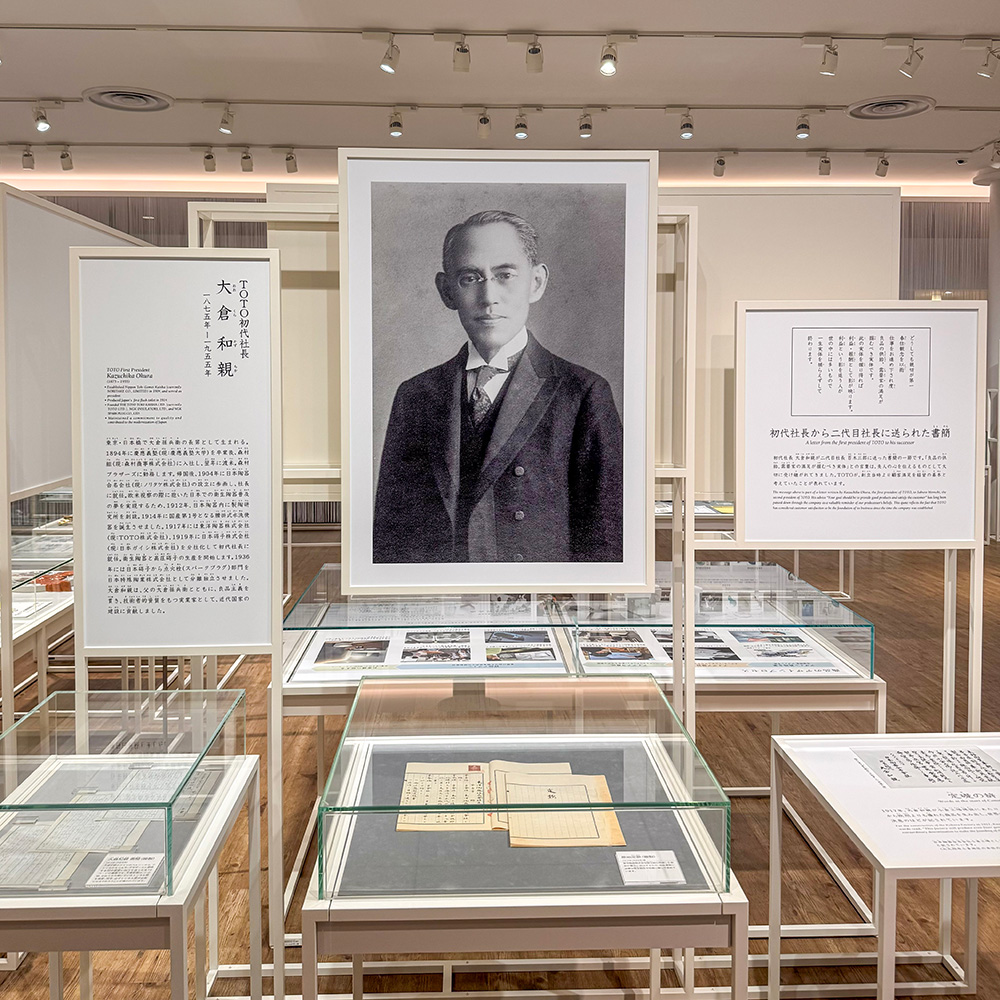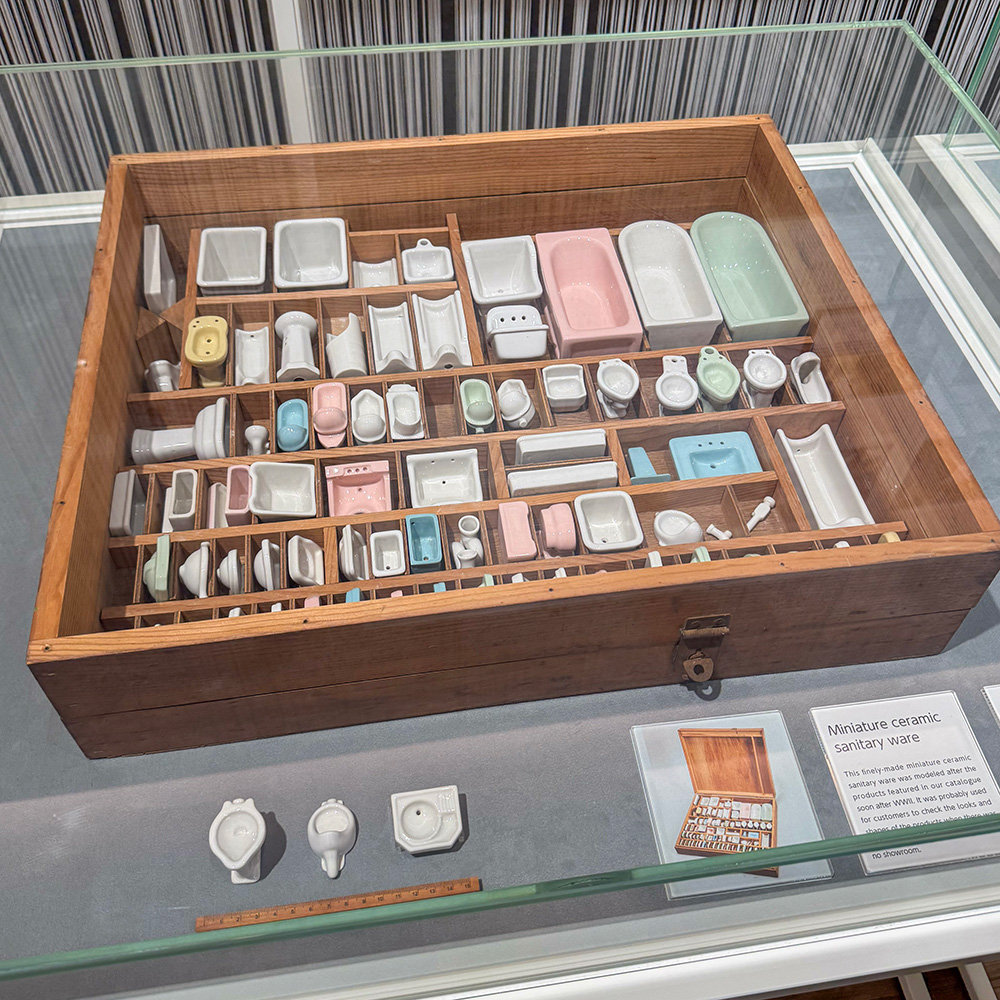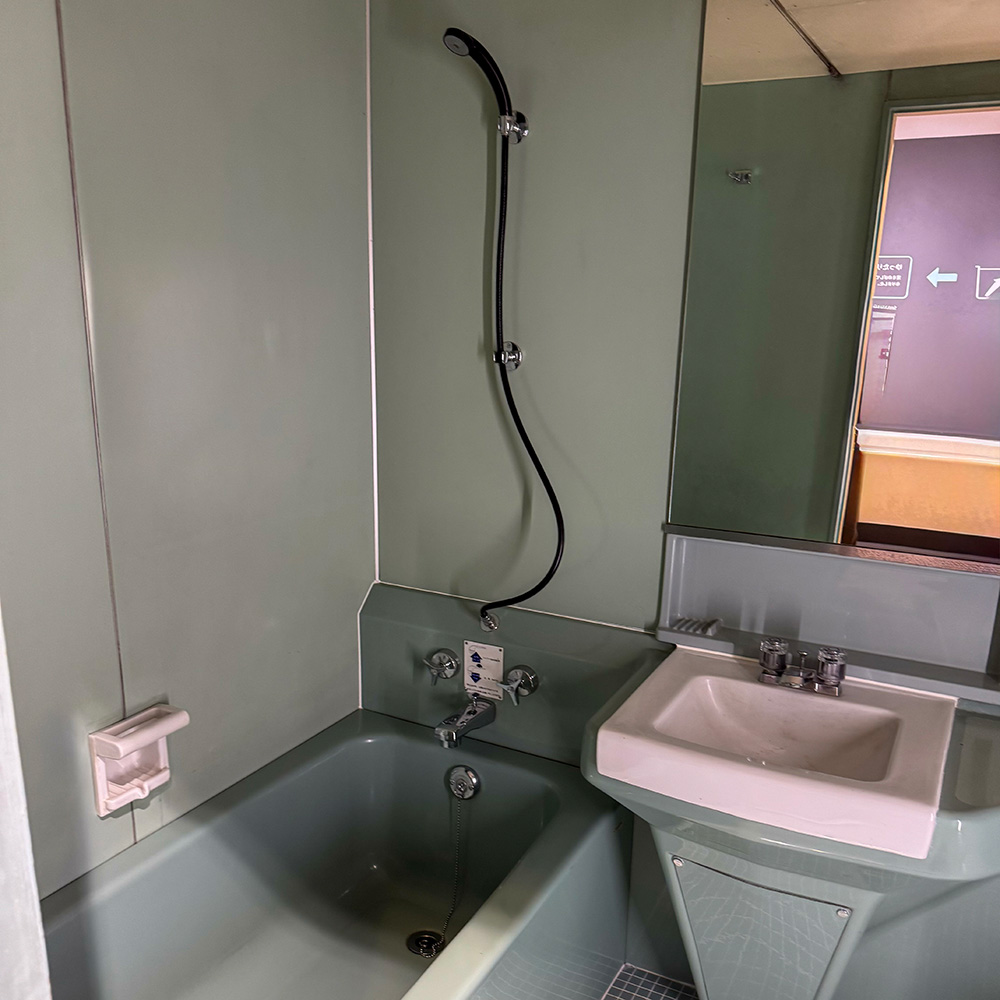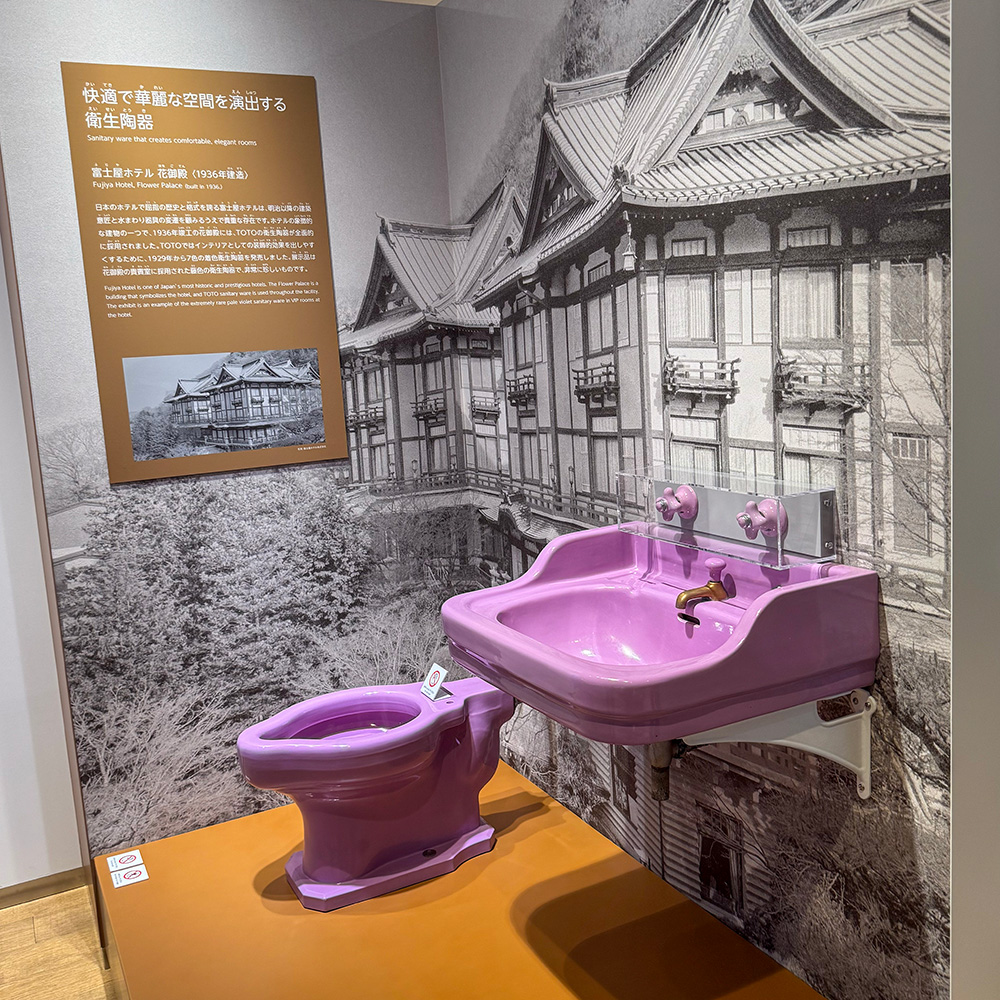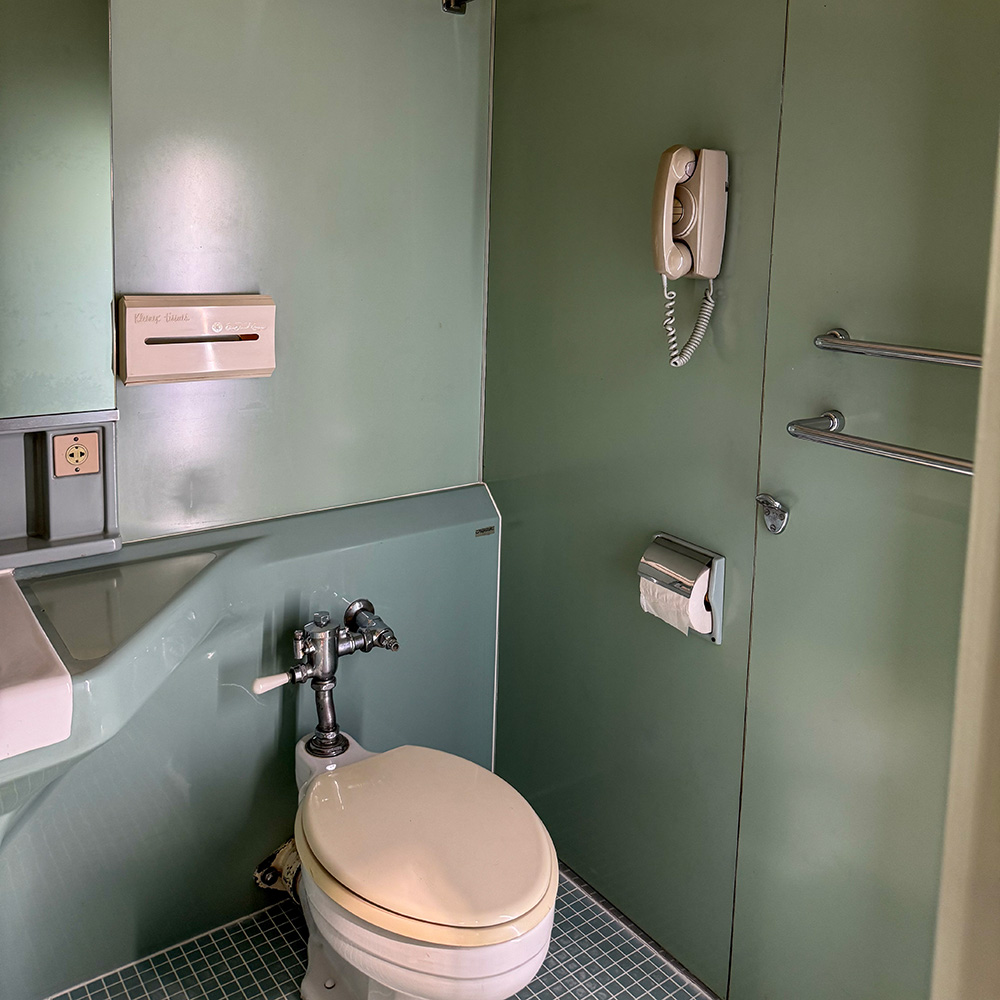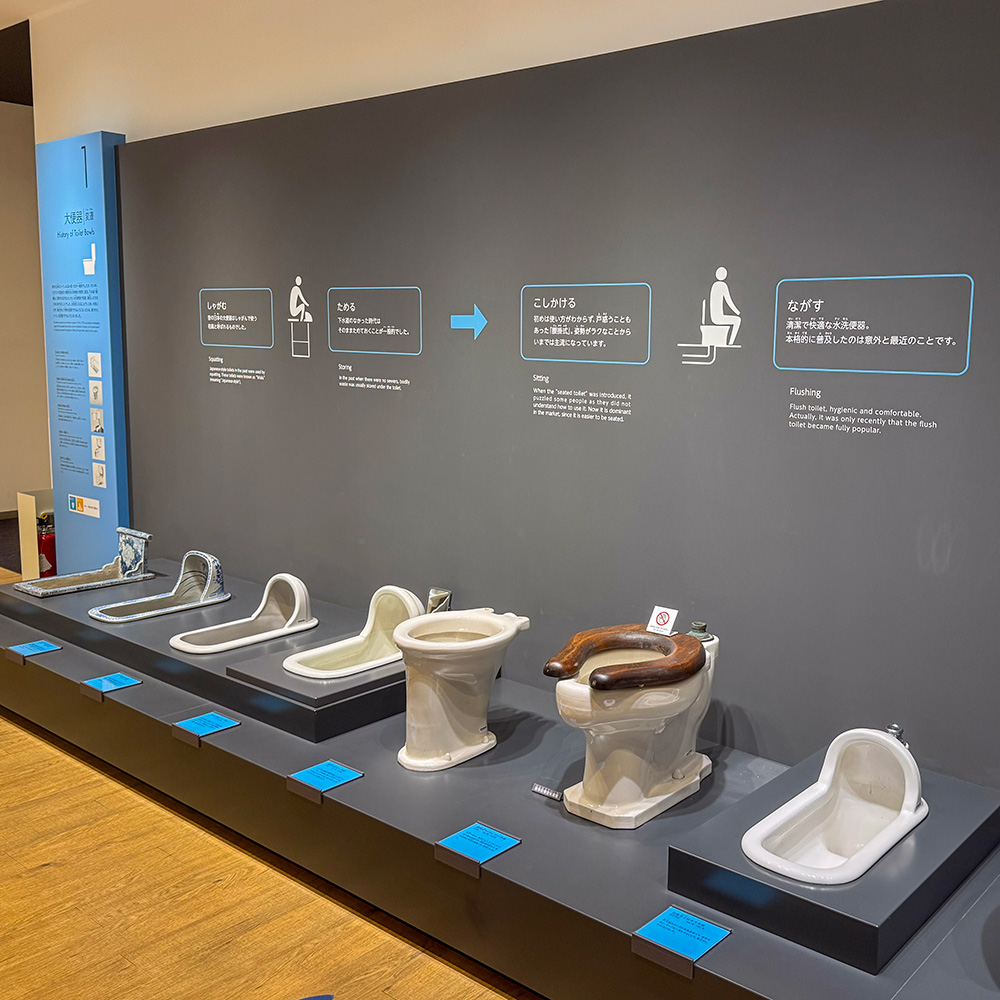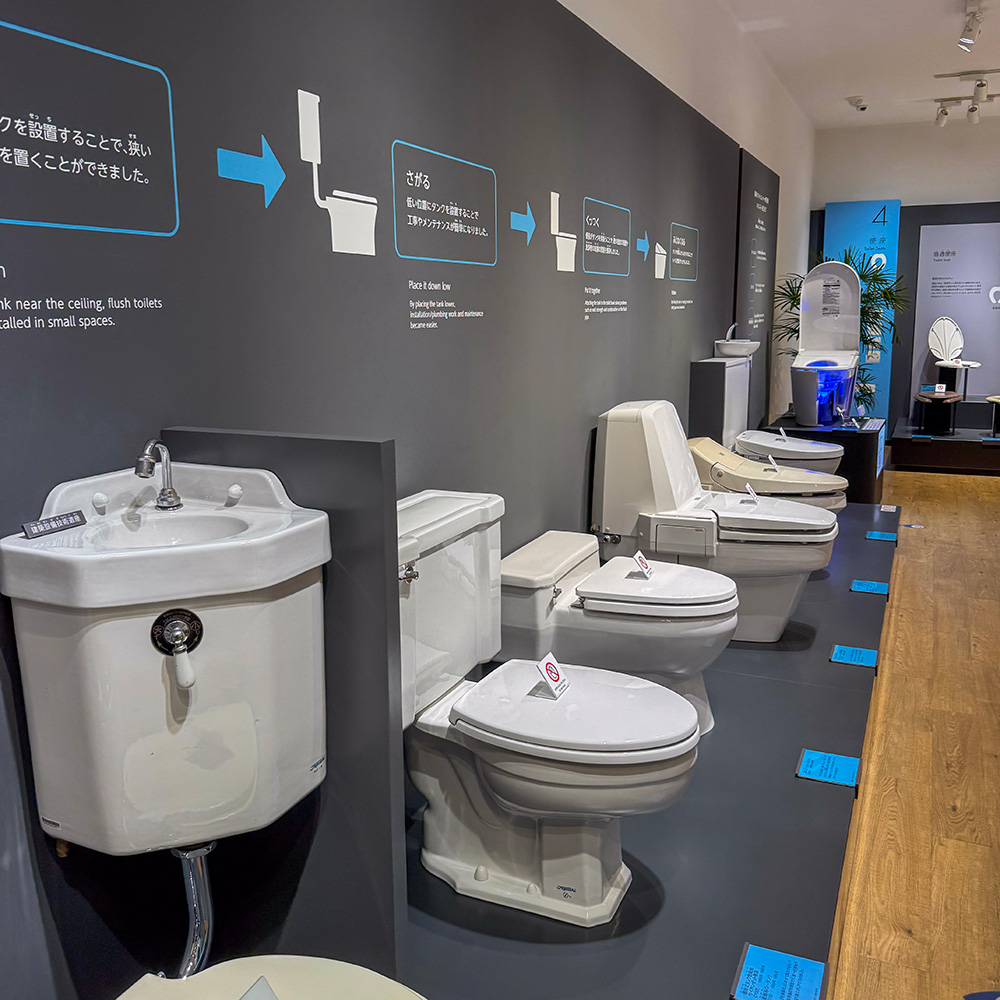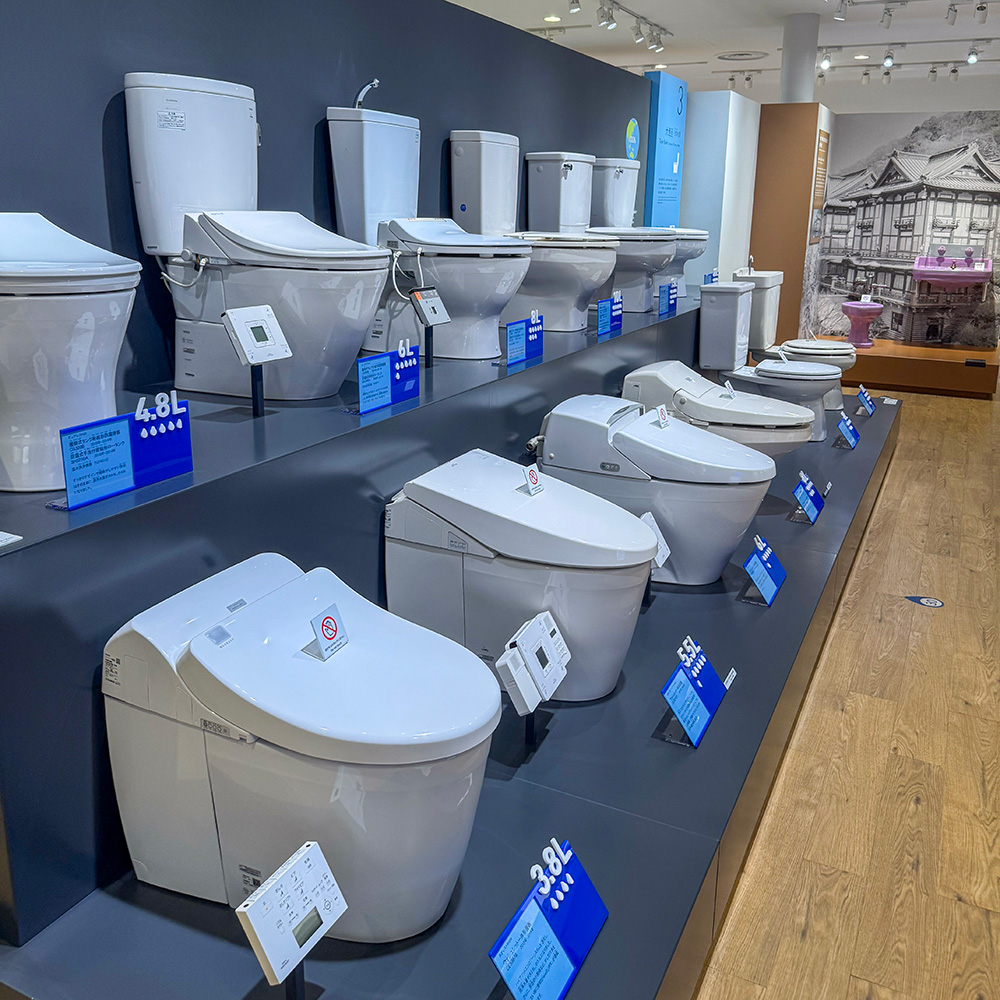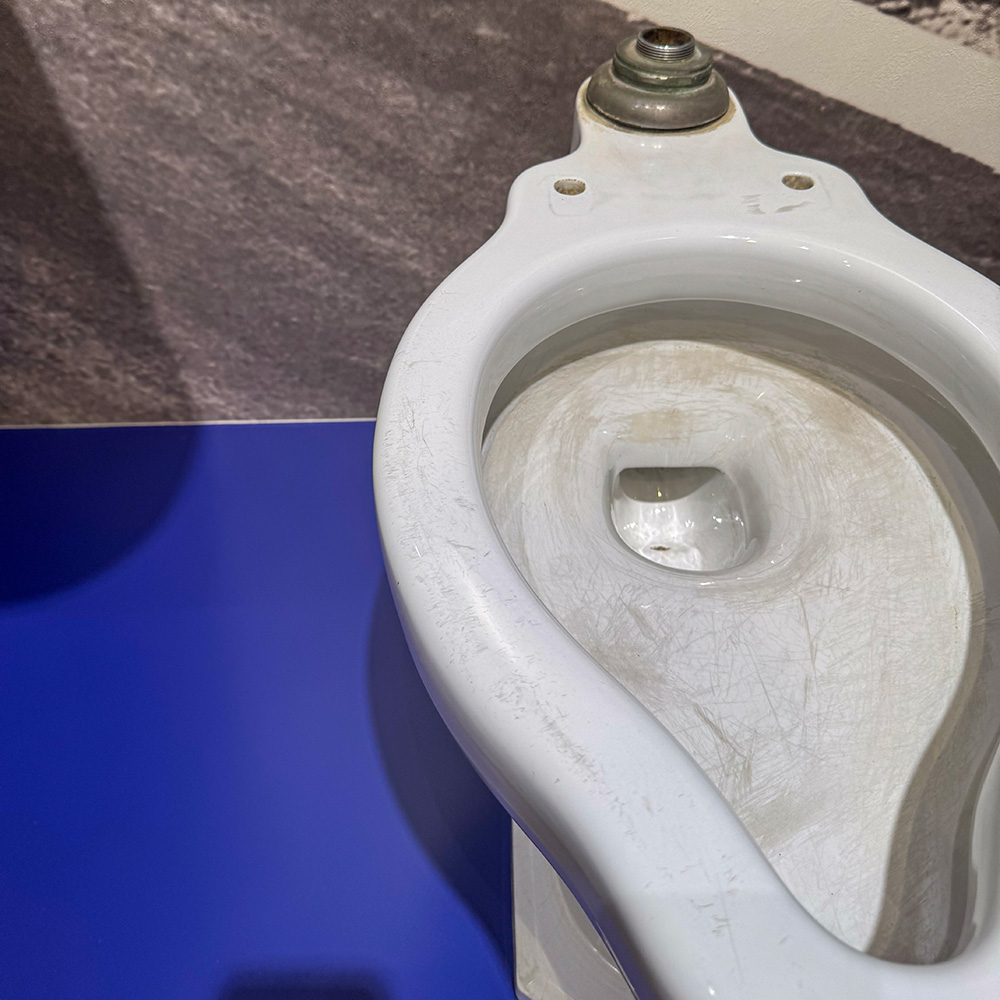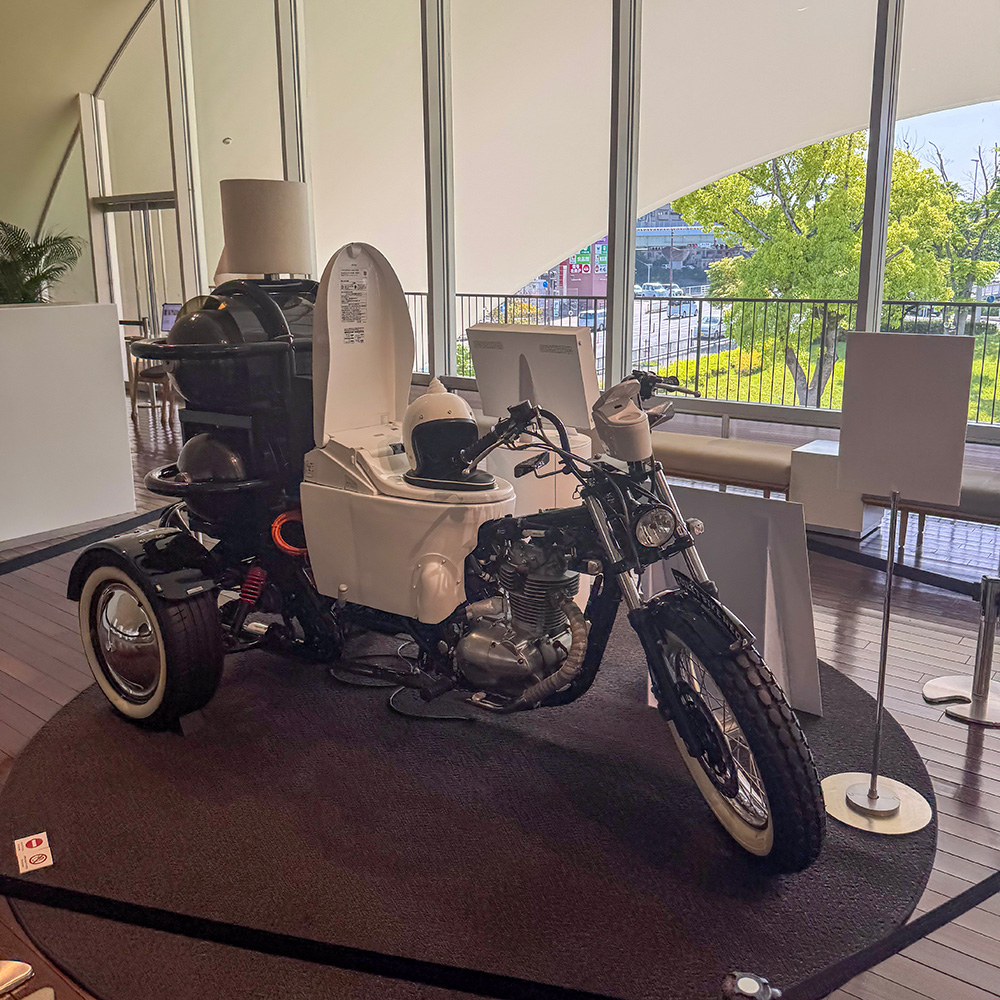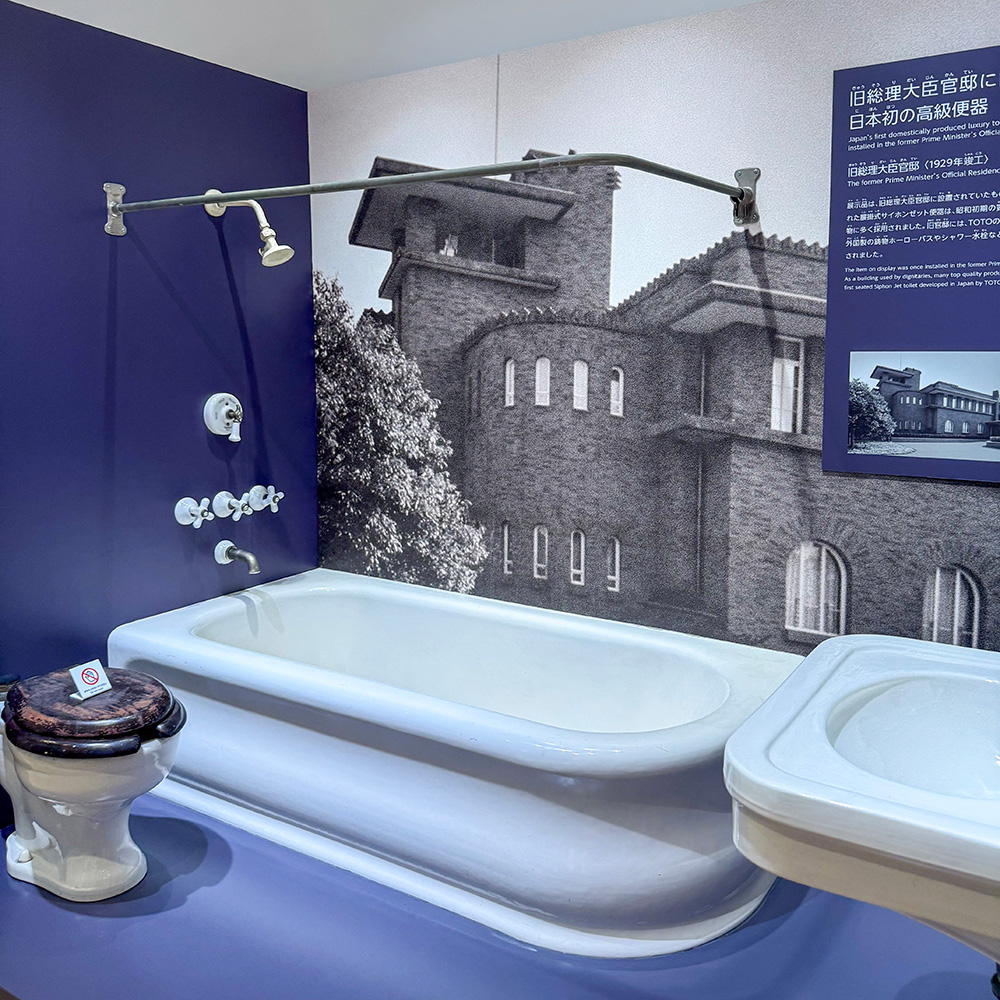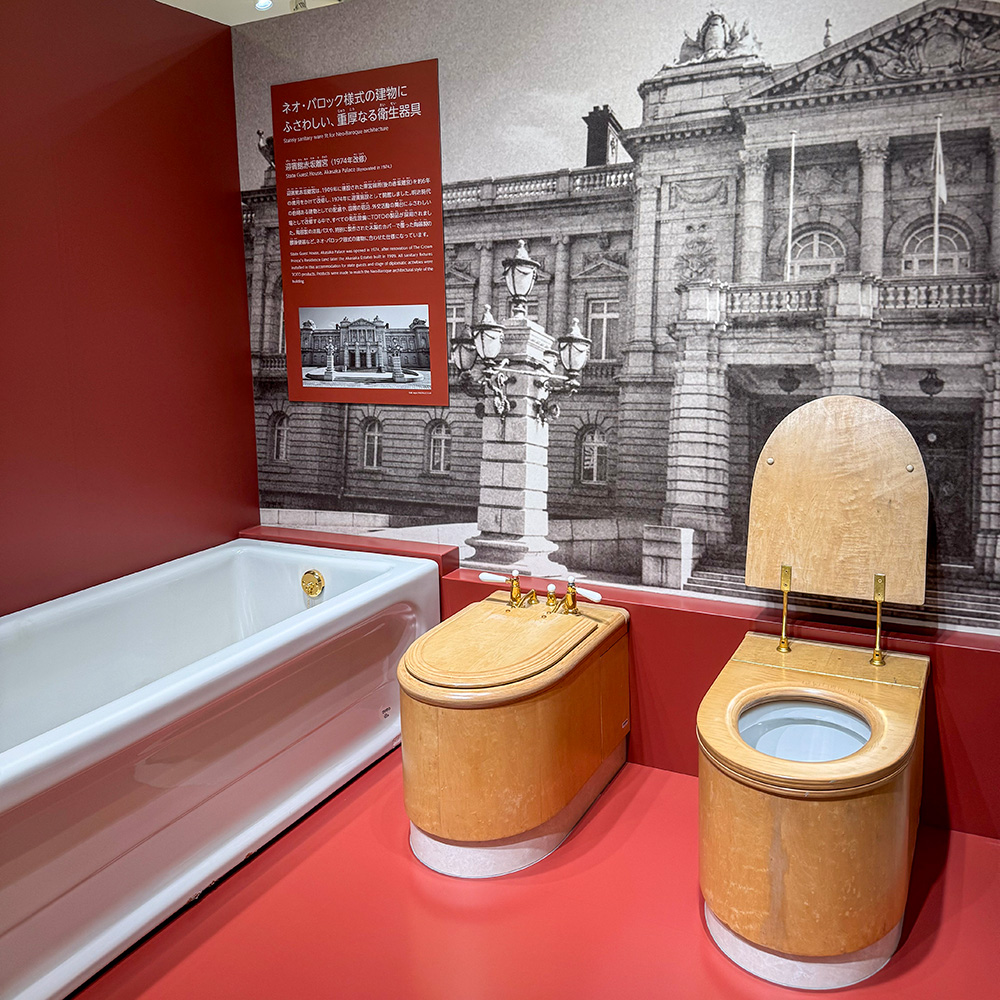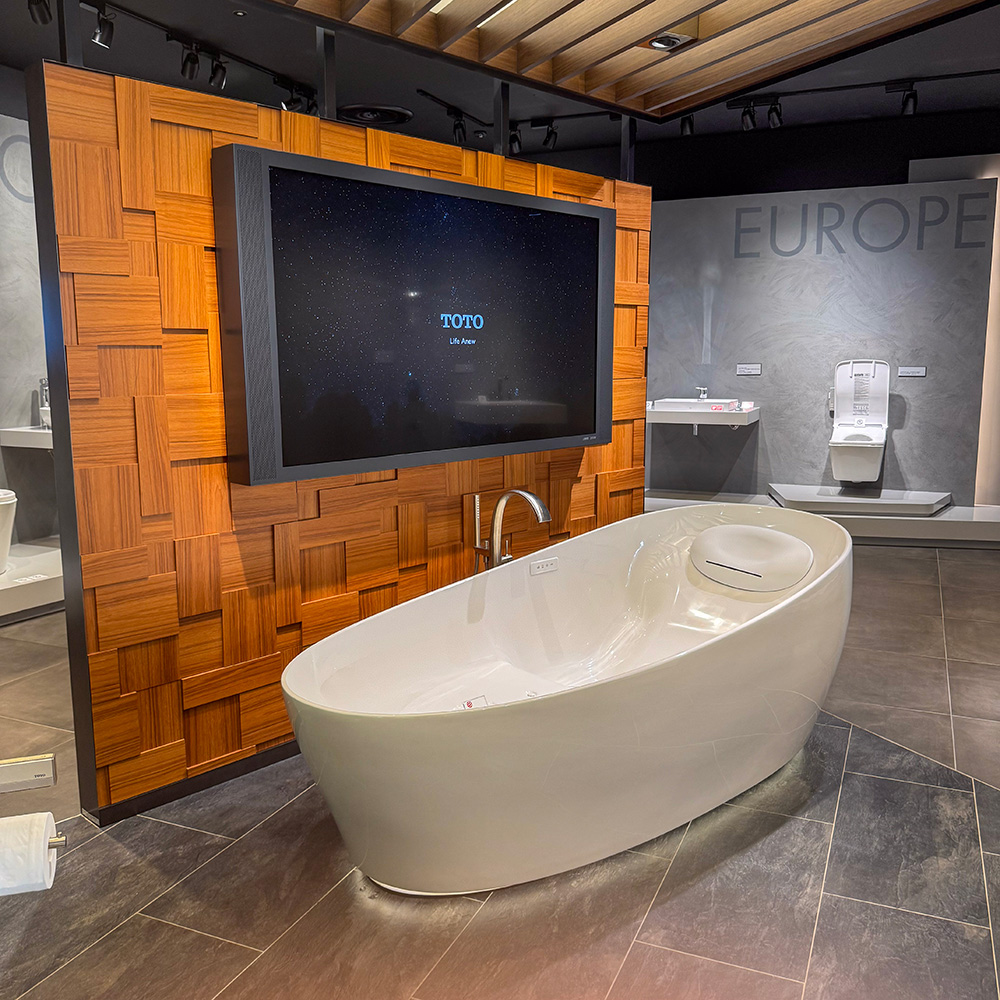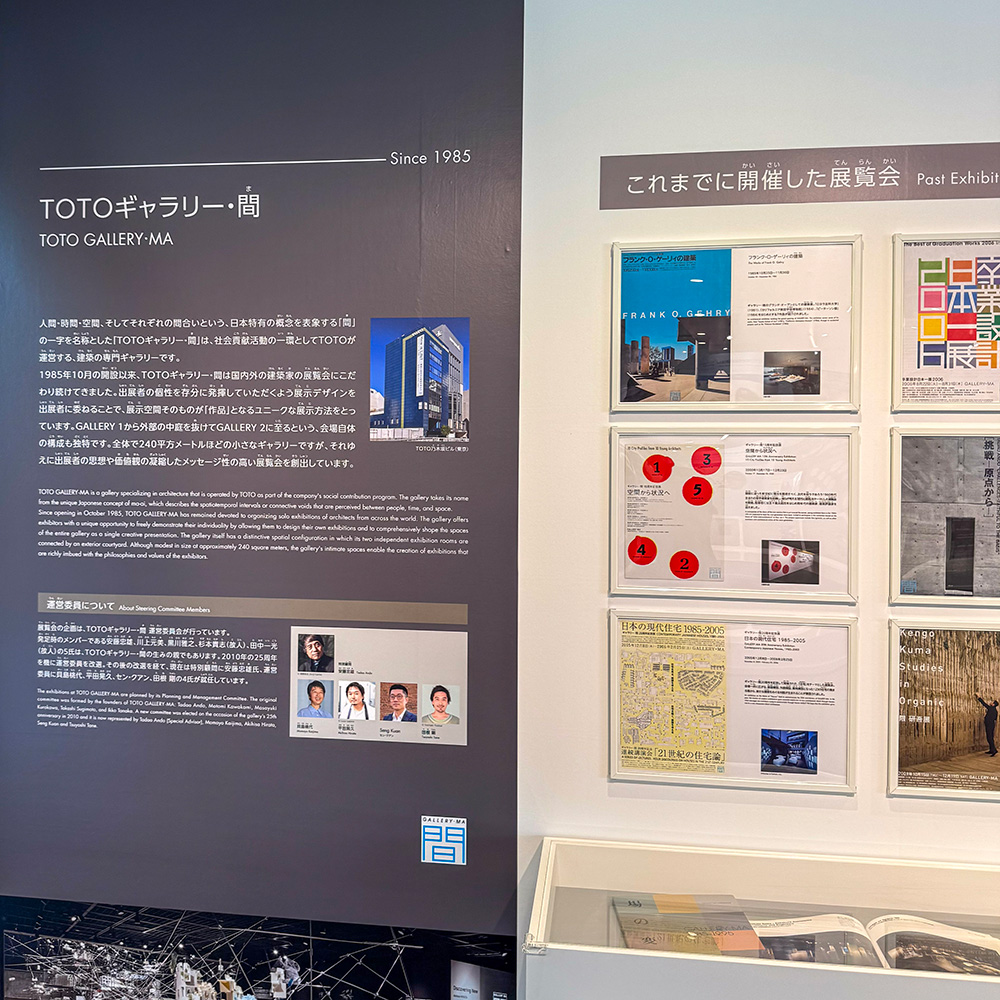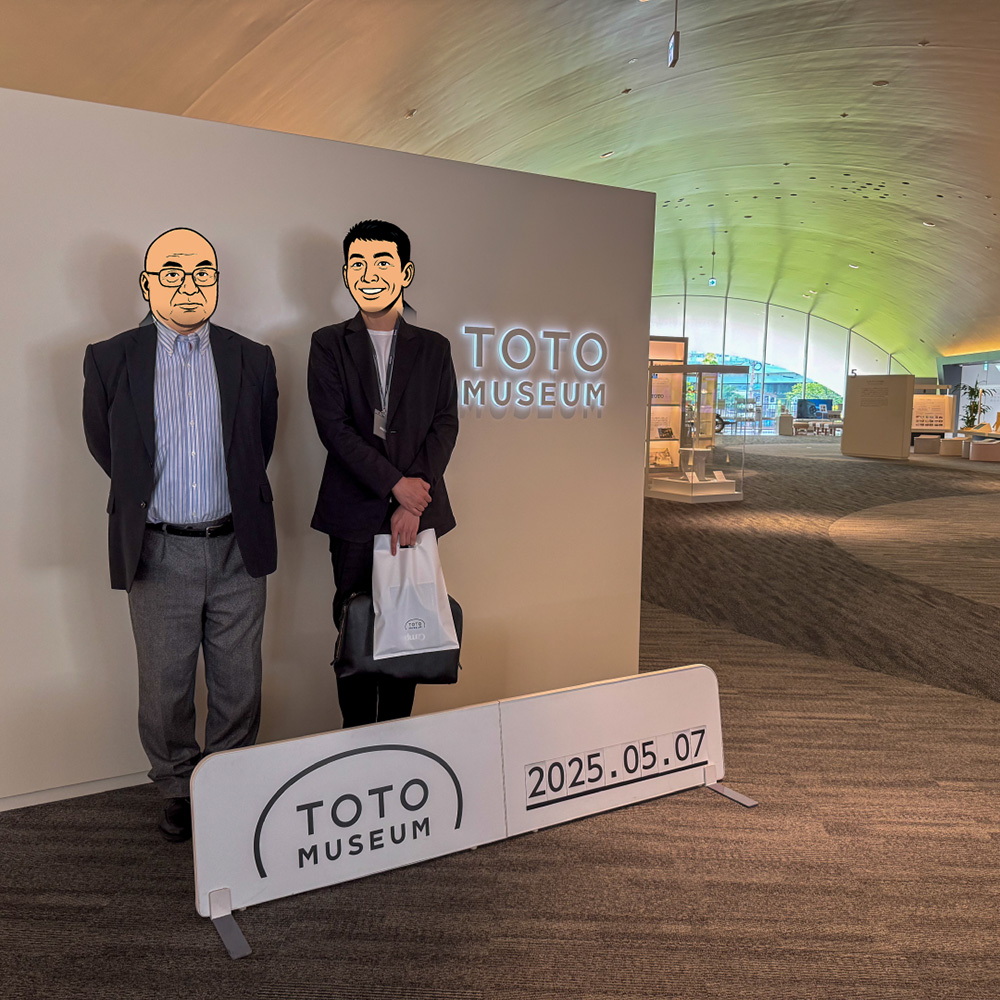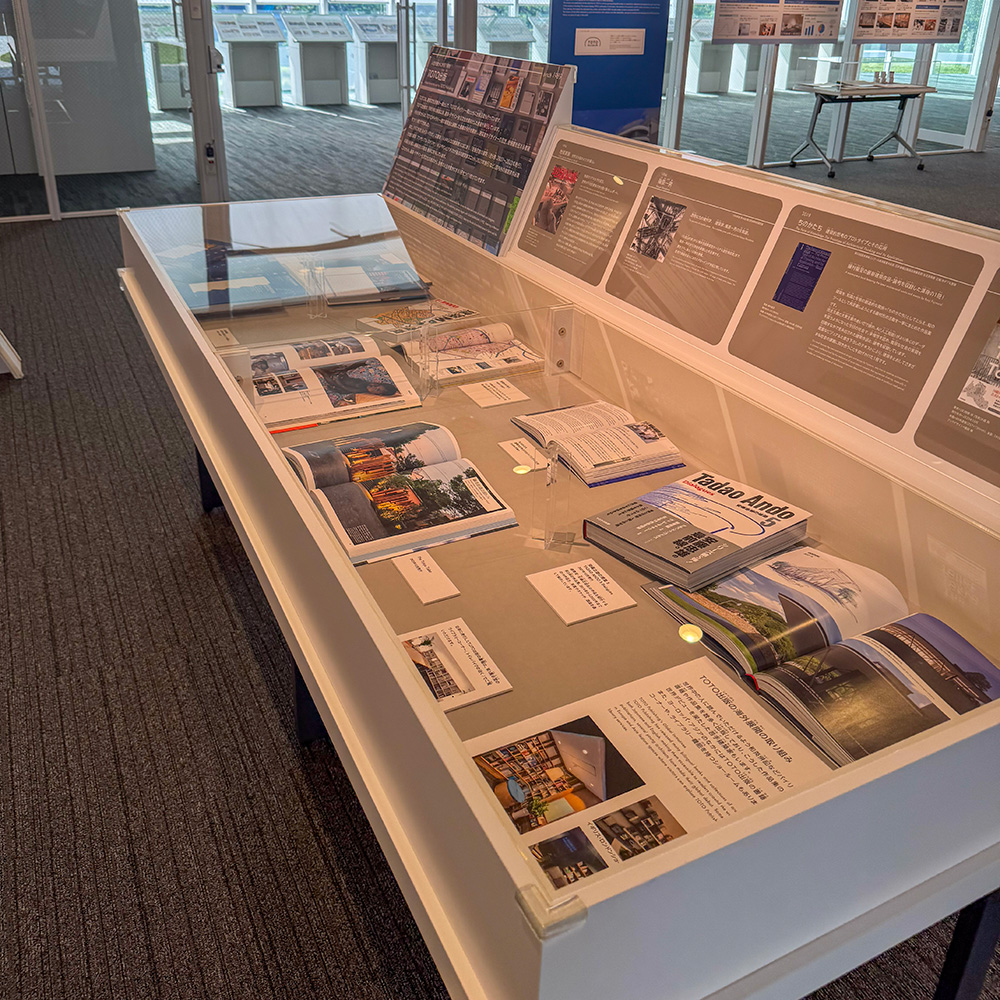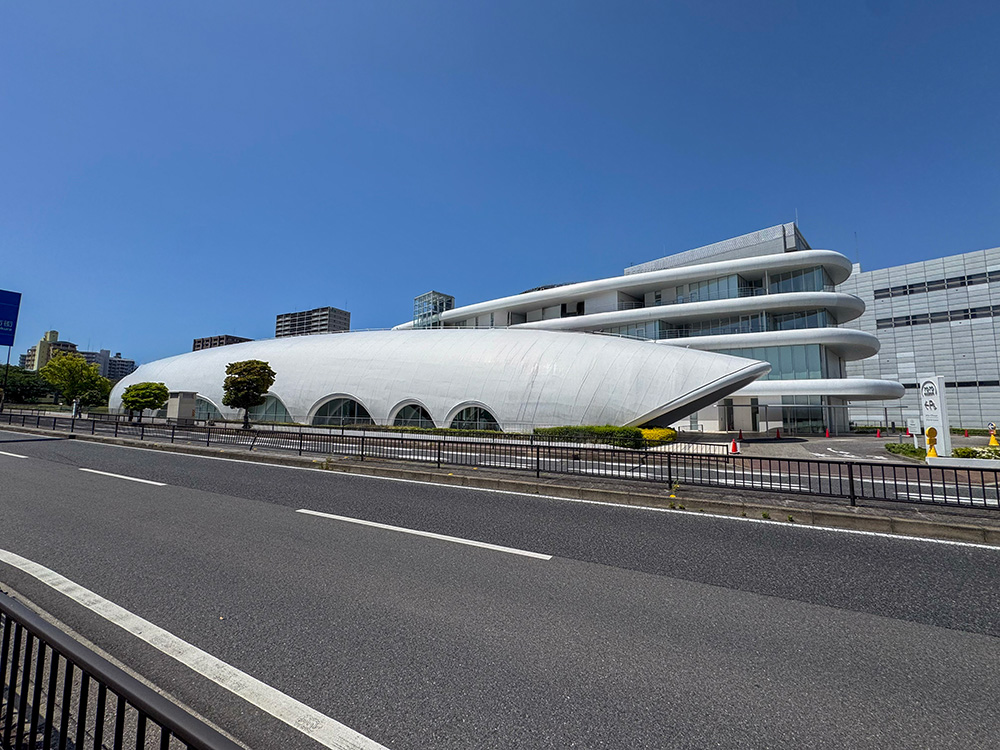
Introduction
Recently, we had the opportunity to visit the TOTO Museum in Kokura, Kitakyushu, Fukuoka Prefecture. While TOTO is widely associated with the “WASHLET” or “toilets,” the company also offers a broad range of bathroom products, including unit baths. During our nearly four-hour tour with TOTO representative and the museum’s director, we gained deep insights into founder Kazuchika Okura (1875–1955) and TOTO’s manufacturing philosophy. For our company, now celebrating 34 years in business, this visit was a valuable chance to look back on our shared history with TOTO products—especially unit baths.
1. The Founding of TOTO and the Spirit of “Kindness First”
TOTO originated from Toyo Toki Co., Ltd., established in 1917 (Taisho 6). Its founder, Kazuchika Okura, held a strong belief in “bringing comfortable, sanitary living to everyone in Japan”, inspired by the ceramic flush toilets he had seen in Europe.
Back then, Japan’s sewage infrastructure was largely underdeveloped, and sanitation issues were widespread. Undeterred, Okura reportedly conducted over 20,000 test iterations before completing Japan’s first Western-style flush toilet in 1914. He chose Kokura for its access to coal and a suitable export port, even using the Murasaki River to transport raw materials and finished products in the early days.
He left behind the maxim, “Always put kindness first. Proceed your work with a spirit of service.” This credo has been passed down through TOTO’s corporate philosophy to this day. It was undoubtedly this spirit that propelled TOTO to steadily promote water-flush toilets—unfamiliar at the time—and to broaden its business with an international outlook.
2. The 1964 Birth of the Unit Bath and the Impact at Hotel New Otani
Although TOTO is renowned for its toilets, the unit bath is the area most closely tied to our own work. In 1964, TOTO supplied the “first Japanese unit bath” to Hotel New Otani. The design split the iron bath frame into upper and lower sections, bolted them together on-site, and even included a bottle opener and a telephone. Short construction times and the novel style of relaxing on the closed bath lid made it a revolutionary bathroom that quickly garnered attention.
During Japan’s postwar economic boom, hotels and public facilities needed to install multiple bathrooms efficiently, so the unit bath’s merits—shorter construction periods and consistent quality—were highly valued. In 1968, TOTO standardized its previously custom-made process and introduced FRP (Fiber Reinforced Plastic) technology to further boost durability and ease of installation. The popularity of unit baths rose swiftly, and today, about 93% of bathrooms in Japan are unit baths.
Our company also offers 1-Day remodel services for unit baths. The knowledge and expertise we’ve built over our 34-year history with TOTO products remains a major strength. For instance, we’ve exchanged opinions on new products or even performed the very first assembly of certain TOTO innovations in Japan. By honoring TOTO’s “Kindness First” ethos, we’ve sought to embody our own desire to “create a more comfortable bathing space for our customers.”
3. The Profound “Toilet Culture” Showcased at TOTO Museum
Our visit to TOTO Museum offered a multifaceted look at the history and technology behind toilets. Highlights included:
- A toilet seat made from cherry wood (1927)
- A Siphon-Jet toilet that took ten years to develop
- The first WASHLET (launched in 1980) — costing 149,000 yen, roughly a new graduate’s monthly salary at the time
- Toilets delivered to the National Diet Building (circa 1936) — no seat, with footprints from those unfamiliar with Western-style toilets
Each exhibit revealed how seriously TOTO’s engineers considered everyday life needs. One striking example was that a WASHLET consists of 20,000 parts and requires three-dimensional engineering. No longer just for waste disposal, the toilet has evolved into a highly sophisticated, essential home appliance.
We were also intrigued by the facility’s energy-saving design. Solar chimneys, ceramic heat storage, and roof sprinkler systems highlight an environmentally conscious approach unique to a manufacturing company. It was impressive to learn that their system can cover up to 20% of winter electricity needs.
4. Our Mission to Carry On the “Unit Bath Culture”
In 2024, the unit bath reached its 60th anniversary. The TOTO Museum displays various unit bath models, illustrating the development of FRP technology and the standardization process. Observing how TOTO improved product quality in response to hotel construction booms and changing residential demands gave us insight into how unit baths became common in many households.
For our part, engaging in bathroom renovations to create a “comfortable bathing space” means this tour was a significant learning experience. Enabling an “1-Day bath remodel—from demolition to completion” relies on TOTO’s production quality and advanced unit-bath construction technology, alongside the skills of our Bather (bath installers), on-site consultants, and a comprehensive management system. We came away reaffirming our desire to “preserve and further develop the unit bath culture born in Japan.”
5. Upholding Kazuchika Okura’s “Manufacturing Philosophy”
The founder, Kazuchika Okura, once wrote: “Supplying good products and satisfying customers is the core purpose. Many people chase profit as a shadow, but end up never capturing the real substance.” Indeed, TOTO’s century-long pursuit of “Kindness First” and “High Quality with Consistency,” along with product development and cultural advocacy driven by customers’ voices, attests to his words.
During our four-hour museum visit, we heard numerous manufacturer-only stories from the guides, experiencing “TOTO’s DNA” in ways that catalogs or websites alone can’t convey. The company’s enduring history, coupled with its continual drive for innovation, proved truly inspiring.
Conclusion
This TOTO Museum tour also allowed us to reconfirm our own shared history with TOTO’s products. Centered on the “1-Day bath remodel” concept, our company has supported countless customers’ smiles over the years, reflecting the same spirit of “Always put kindness first.”
TOTO’s water-related innovations will undoubtedly keep evolving, and we feel a strong responsibility to preserve and cultivate the unit bath culture that originated here in Japan, delivering better living experiences to as many people as possible.
Moving forward, we will continue valuing on-site practices, integrating the latest product information and installation techniques to provide “comfort” and “peace of mind” to our clients. If you’re curious about unit baths or any water-related renovations, please feel free to contact us.
